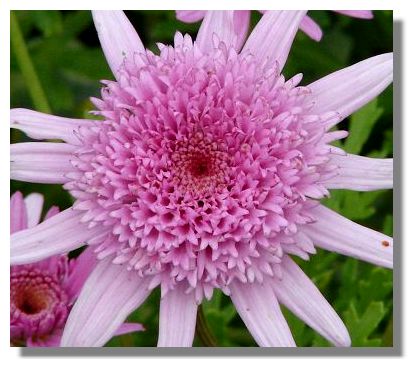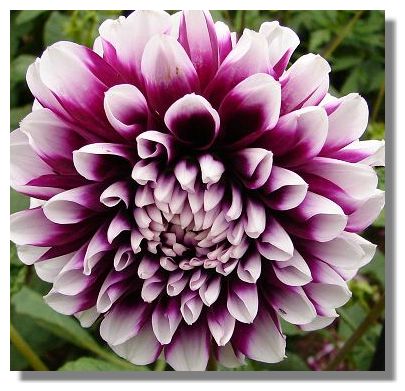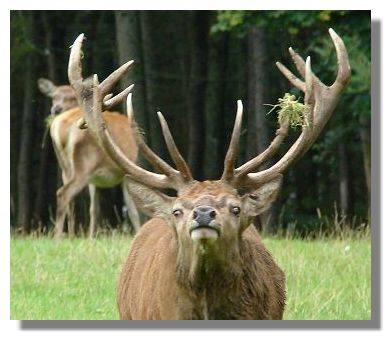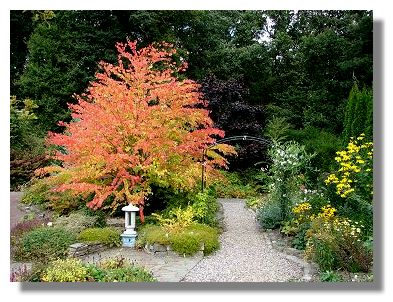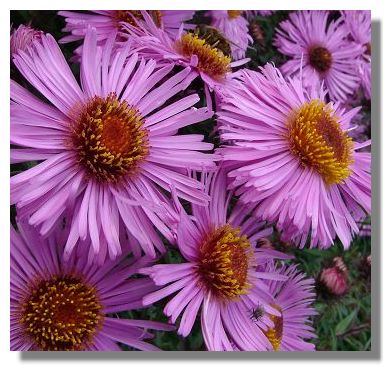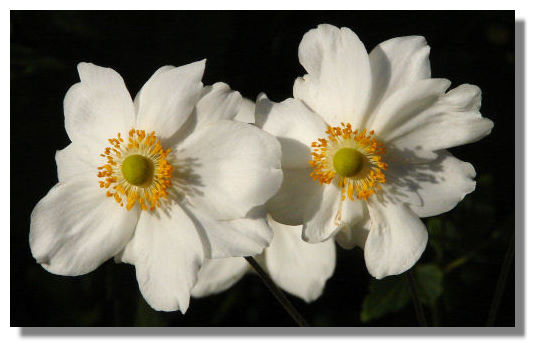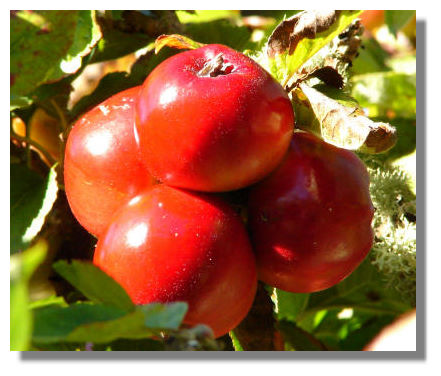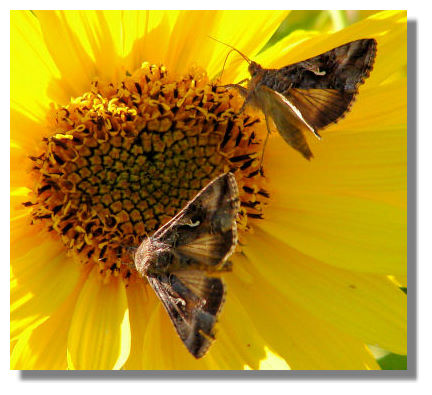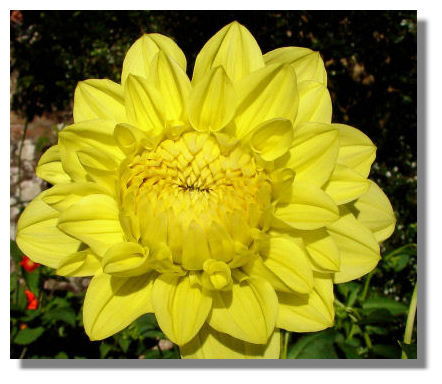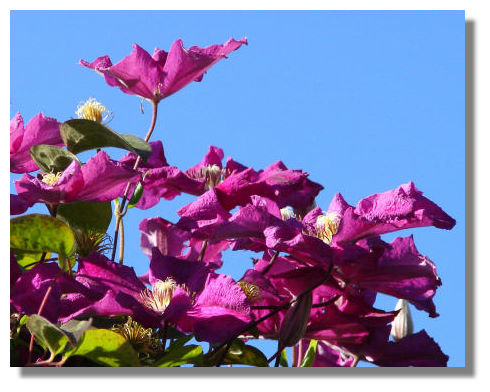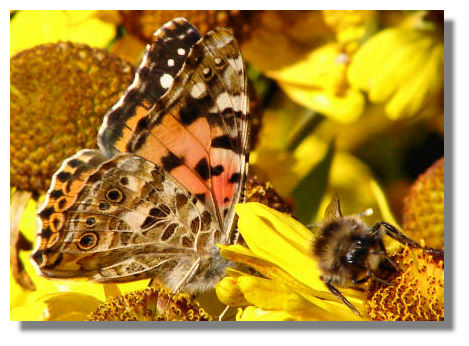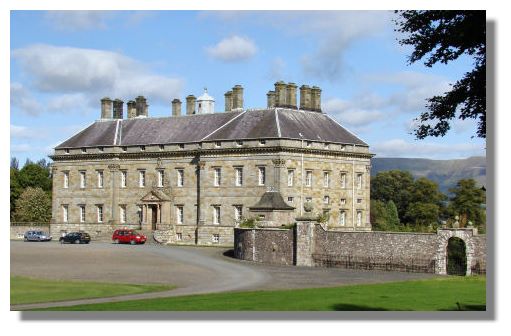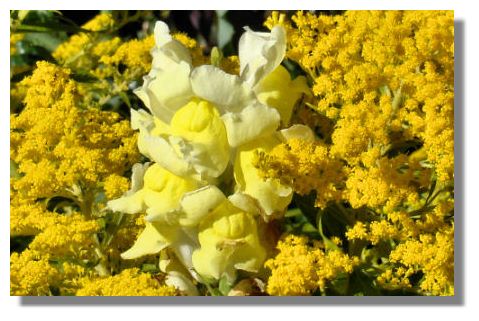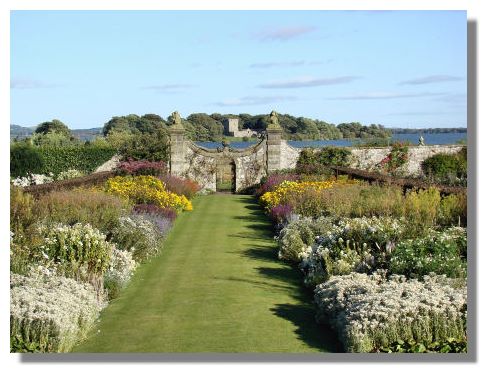This lovely pink Argyrantheum was spotted growing in the walled garden at Culzean Castle in Ayrshire. This is a relation of the Marguerite and is also known as the "Paris Daisy".
The gardens at Culzean always have a fantastic show of dahlias and the only problem is deciding which of the many varieties to include in this selection!
Not quite a "stag at bay", rather "a stag charging". But the fierce expression on its face is reduced somewhat by the grass hanging from its antlers. By the way, there was a stout fence between me and that stag!
The autumn colours of the Katsura Tree (Cercidphylum Japonicum) shine out in this view of the demonstration garden at Glendoick Garden Centre in Perthshire.
The flowers of the Michaelmas Daisy (a variety of Aster) come into bloom late in the season. These ones were photographed at Culzean Castle in Ayrshire.
Anemone Japonica make a grand display at this time of year. They flower for a long time and come in both white (as here) or pink and mauve. The individual flowers are 2/3 inches wide and the plants can be up to five feet tall.
We may not be able to grow grapes or peaches outside in Scotland, but apples and pears can grow in orchards. But they are usually not grown commercially. These "Red Victoria" apples were photographed growing in the large walled garden at Culzean Castle in Ayrshire.
"Silver Y" moths are a well-known immigrant species, and can turn up in thousands under the right conditions. While numbers have not been quite at that level, I have seen them in abundance in both Fife and in Ayrshire - these ones were photographed in the gardens at Culzean Castle. Unlike many moths that only fly at night, the Silver Y is also a day flyer. Its name comes from the silver marking on the wing which is (supposedly) in the shape of the third letter in the Greek alphabet - gamma.
This variety of Dahlia rejoices in the name "Glorie van Heemstede", a tall, free-flowering variety with beautiful yellow flowers that respond well to the sunshine.
Clematis are well known as climbing plants that scramble up hedges and walls, reaching for the sky with their striking, colourful blooms. With the blue sky behind, who could believe that this was an autumn picture?
This Painted Lady butterfly and the bee are competing for the nectar from these Helenium flowers in the gardens of Finlaystone Country Estate in Renfrewshire. It is sad to think that this lovely butterfly, which has probably flown in from the Mediterranean, will not survive a Scottish winter.
Construction of Kinross House was begun in 1686, by the architect Sir William Bruce as his own home. Bruce was a key figure in introducing the Palladian style into Scotland and has been compared to the pioneering English architects Inigo Jones and Christopher Wren. Bruce played a role in the Restoration of Charles II and was rewarded with lucrative official appointments, including that of Surveyor General of the King's Works in Scotland, effectively the "king's architect". Kinross House is regarded as one of his finest works, and was called by Daniel Defoe "the most beautiful and regular piece of Architecture in Scotland". Even so, it was unoccupied by subsequent owners for much of the 19th century and by 1902 the formal garden was a wasteland. Then the owner, Sir Basil Montgomery, decided to live in the house again and to restore the gardens, remaking the glorious formal garden, planting yew hedges and trees, recreating the formal rose garden and laying out the lovely herbaceous borders. Today, the garden at Kinross House ranks as one of the finest formal gardens in Scotland.
The Goldenrod (Solidago) plant is well named with its frothy spikes of long-lasting, golden yellow flowers. Somehow, an Antirrhinum has managed to force its way through the Goldenrod to add another shade of yellow to the picture.
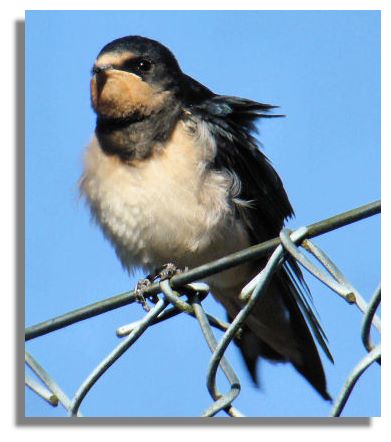
The last of the Swallows have been feeding furiously on insects before they undertake the long journey back over Europe, the Mediterranean and the Sahara Desert to return to their winter quarters in southern Africa - 6,000 miles away. This one, sitting on a fence, looks like a young bird which was born here during the summer - its feathers are being ruffled by a strong wind.
Sir William Bruce designed his home at Kinross House to have a clear view of the historic castle on the island on Loch Leven. The best view is from the house itself, but different views can be obtained as you walk towards the splendid gates (neatly scalloped to give an uninterrupted view of the castle) at the end of the herbaceous border.
If you want to look back at other editions of these photos of Scotland week by week, there is an Index Page
